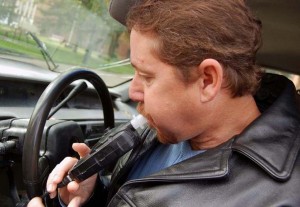The nation’s top auto safety manager wants to ramp up the crackdown on drunk drivers, and is urging that all states begin requiring ignition interlocks for anyone convicted of a driving under the influence, even after a first-time offense.
There has been a concerted effort to keep drunks off the road in recent years, targeting what has traditionally been one of the most significant causes of fatal accidents. And the number of fatalities related to the problem has fallen from more than 21,000 annually in the early 80% — accounting for more than 50% of all road deaths, according to the National Highway Traffic Safety Administration – to around 10,000 in recent years, a third of traffic fatalities.
All 50 states and the District of Columbia now make use of ignition interlocks – which are designed to prevent a vehicle from starting if the driver was drinking. But the rules on who must use the devices varies. In Michigan, for example, only those convicted of having blood-alcohol levels of 0.17, double the legal definition of driving under the influence, must use an interlock. In West Virginia, an interlock can be used for a first-time offender at a judge’s discretion. Other states only target repeat offenders.
Only 20 states currently require the devices for anyone convicted of a drunk driving-related offense.
Outgoing NHTSA Administrator David Strickland wants that to change in order to “protect sober motorists and ensure that individuals convicted of drunk driving learn from their mistakes.”
(Even speeders back speed laws, new federal survey finds. Click Here for the story.)
The agency this week released its “model guideline for state ignition interlock programs” that would cover even first-time offenders just barely over the limit.
Studies show that ignition interlocks are about 75% effective in keeping those previously convicted of drunk driving from repeating their behavior. While there are numerous different designs, the devices typically require the driver to blow into a tube that measures breath alcohol levels. If a person fails they may try again, for up to three attempts before the vehicle is locked down.
Other versions may also use cameras to record a person’s behavior behind the wheel. Courts may access the data recorded and, in some jurisdictions, a motorist who blew over the limit may face additional penalties.
(NHTSA Chief Strickland stepping down in 2014. Click Here to find out who’ll replace him.)
NHTSA’s increased focus on drunk driving is timely considering there was a reported 4.6% increase in total driving deaths related to alcohol abuse in 2012, for a total of 10,322 fatalities on U.S. roads.
There have been as many as 1.5 million annual arrests for driving under the influence or for driving while intoxicated in recent years. Even so, the group Mothers Against Drunk Driving cites studies that first-time DUI offenders will have driven intoxicated 87 times before their first arrest.
Currently, government data indicates about 300,000 motorists must use the devices in order to get behind the wheel. They typically cost about $75 and may run $50 a month or more to maintain.


Unfortunately these devices can not yet detect DUI cases other than alcohol. With some states foolishly legalizing the personal use of pot and the massive drug addiction in the U.S., be it legal drugs or illicit, people literally risk their lives driving down the road these days. I’ve never in 40 years seen such vehicular issues as we have today in the U.S.